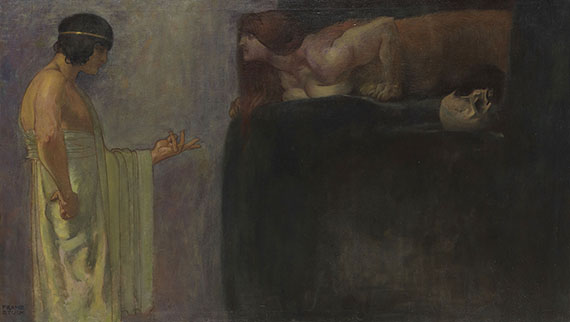Dictionary


Hudson River School
The Hudson River School, a loose and not institutionalized group of American landscape painters, had a special importance within American Romanticism. The name reflects one of the group's most favorite subjects, the Hudson River, particularly its headwaters in the State of New York, where members made their drawings in front of nature in the group's early days. The name, however, was only commonly used after the main productive period, which was at the turn of the century.
The Hudson River School was started by Thomas Cole (1801-48), who traveled the region in 1825, where he made several sketches. In the further course, meanwhile Cole had advanced to be one of the most important American landscape artists, more and more artists congregated around Cole, in order to work in front of nature. In compliance with the oeuvre of Thomas Cole, the artists of the Hudson River School made allegoric landscapes as well as genuine depictions of nature. After Cole's death in 1848, Asher Brown Durand (1796-1886) became the group's leading figure, other important artists were Thomas Doughty, Frederic Edwin Church and Jasper F. Cropsey. It gradually became the group's ultimate ambition to depict untouched nature in a realistic manner, doing without any heroic pathos and mythological transfiguration. The painters were especially interested in climatic changes and play of lighting conditions as well as the changing times of the day or the seasons. Additionally, Durand coined two certain formats: The distant landscape scene and the view into a forest's interior.
The Hudson River School saw its heyday in the 50s and 60s of the 19th century. Journeys to North- and South America and Canada took place, some artists, such as Albert Bierstadt and Worthington Whittredge, traveled to Europe. In the 1860s, John F. Kensett, Sanford Gifford and Martin Johnson Heade turned their attention to light effects: Their pictures, comprised under the signet "Luminism", had some influence on Impressionism.
The Hudson River School, a loose and not institutionalized group of American landscape painters, had a special importance within American Romanticism. The name reflects one of the group's most favorite subjects, the Hudson River, particularly its headwaters in the State of New York, where members made their drawings in front of nature in the group's early days. The name, however, was only commonly used after the main productive period, which was at the turn of the century.
The Hudson River School was started by Thomas Cole (1801-48), who traveled the region in 1825, where he made several sketches. In the further course, meanwhile Cole had advanced to be one of the most important American landscape artists, more and more artists congregated around Cole, in order to work in front of nature. In compliance with the oeuvre of Thomas Cole, the artists of the Hudson River School made allegoric landscapes as well as genuine depictions of nature. After Cole's death in 1848, Asher Brown Durand (1796-1886) became the group's leading figure, other important artists were Thomas Doughty, Frederic Edwin Church and Jasper F. Cropsey. It gradually became the group's ultimate ambition to depict untouched nature in a realistic manner, doing without any heroic pathos and mythological transfiguration. The painters were especially interested in climatic changes and play of lighting conditions as well as the changing times of the day or the seasons. Additionally, Durand coined two certain formats: The distant landscape scene and the view into a forest's interior.
The Hudson River School saw its heyday in the 50s and 60s of the 19th century. Journeys to North- and South America and Canada took place, some artists, such as Albert Bierstadt and Worthington Whittredge, traveled to Europe. In the 1860s, John F. Kensett, Sanford Gifford and Martin Johnson Heade turned their attention to light effects: Their pictures, comprised under the signet "Luminism", had some influence on Impressionism.
Offers




